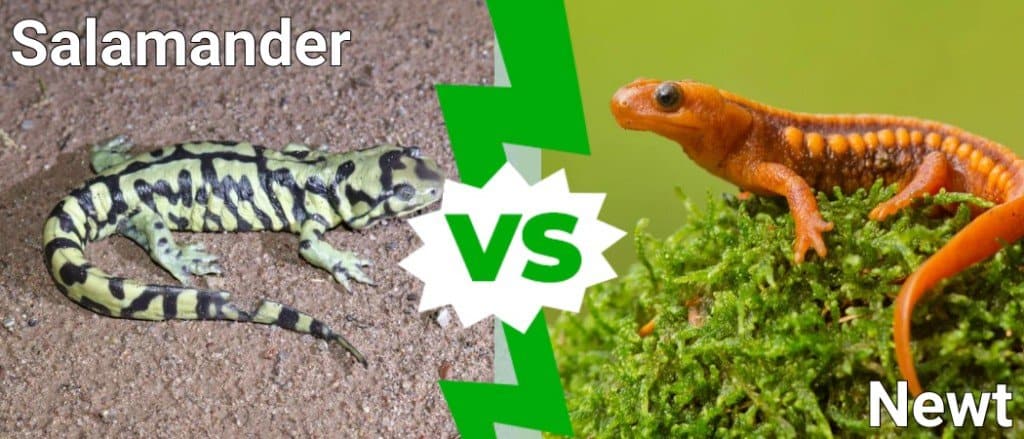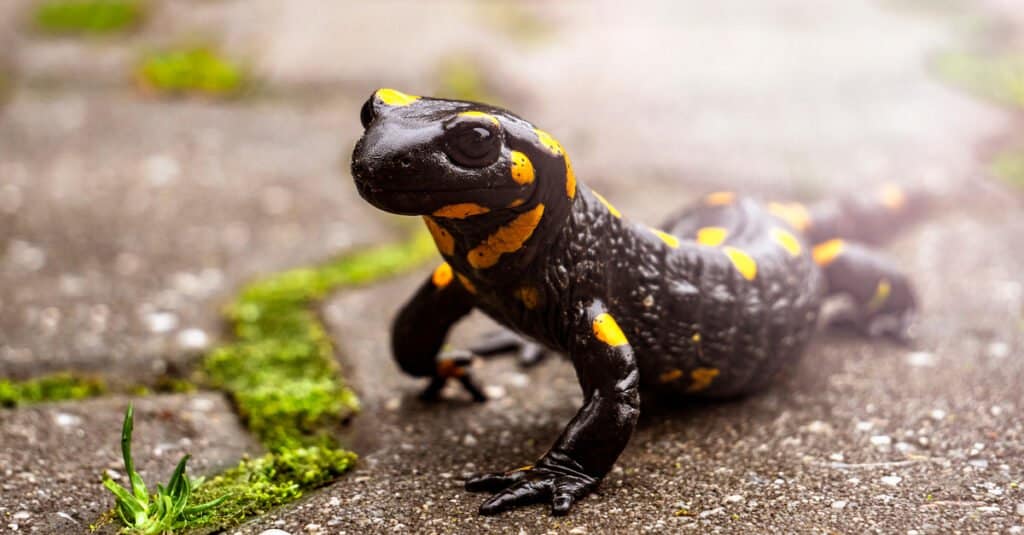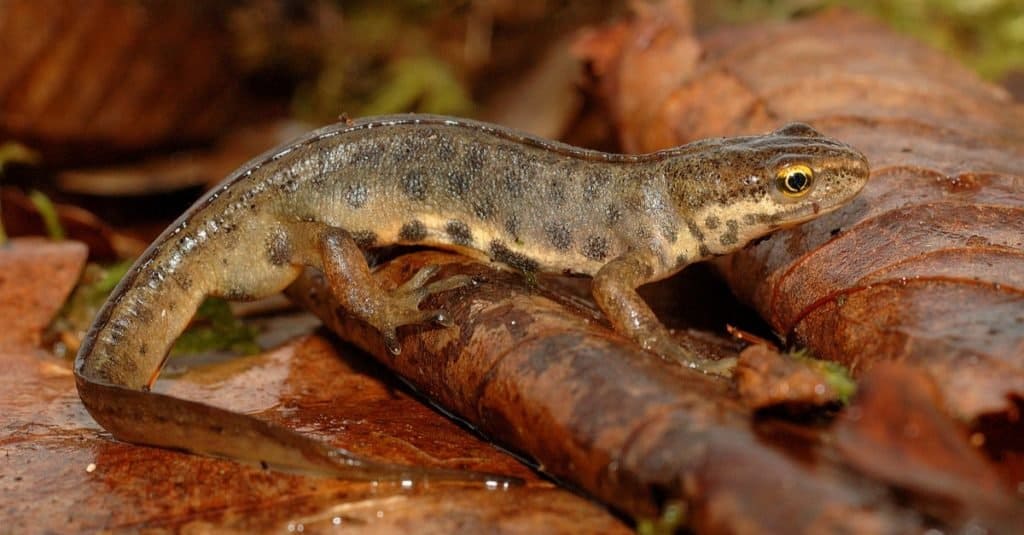There are many reasons why you might confuse a newt vs salamander. What we know of as newts are actually a branch of the salamander subfamily, known as Pleurodelinae. Newts and salamanders belong to the Salamandridae family of species. However, this does not make them the same.
Both newts and salamanders are amphibians and begin their life similarly, but there are several key differences that you can remember in order to tell these two slimy critters apart. Let’s talk more about their distinct features now.
Comparing Newt vs Salamander

| Newt | Salamander | |
|---|---|---|
| Habitat | Moist, wet environments; lives primarily in the water | Moist, wet environments; lives on land and in water |
| Tail | Paddlelike and narrow; designed for swimming | Long and rounded tails, similar to most lizard tails |
| Feet | Webbed toes and feet, designed for swimming | Defined digits and toes for digging and walking |
| Classification | Pleurodelinae | Salamandridae |
| Lifespan | 5-20 years | 6-50 years, depending on species |
The Main Differences Between Newt vs Salamander

While all newts are technically salamanders, not all salamanders are newts.
©Milan Zygmunt/Shutterstock.com
There are many key differences between newts vs salamanders. While all newts are technically salamanders, not all salamanders are newts. Salamanders have bodies more adapted to living on land while newts are designed to live the majority of their life in water. Their lifespans can also differ, with many salamander species far outliving newt species.
Now that you know some of the differences between these two amphibians, let’s take a look at those differences in more detail.
Newt vs Salamander: Habitat and Life Cycle
One of the main ways that you can tell the difference between newt vs salamander lies in their preferred habitats and life cycles. While both of these creatures begin life in a similar fashion as amphibians, their trajectory differs as they get older.
For example, most newts and salamanders lay their eggs in the water and their babies transform into tadpoles before becoming fully grown amphibious adults. However, the adult newt will prefer to live in the water while the adult salamander will prefer to live primarily on the land with water nearby.
This can be one way that you can easily identify these two amphibians from one another. Newts live in water almost exclusively, while salamanders have adapted to life on land. These differences are extremely visible in their physical appearance, which we will discuss now.

Newts live in water almost exclusively, while salamanders have adapted to life on land.
©Smarteless/Shutterstock.com
Newt vs Salamander: Feet
A key difference between newts vs salamanders lies in the shape of their feet. Salamanders have adapted to life on land and have well defined toes and feet, while newts often have webbed feet and toes, ideal for living in the water.
Salamanders are often mistaken for lizards, but their toes will not have claws and they will not be scaly. Newts will look even less like lizards given their webbed feet and complete lack of scales. Both salamanders and newts have unique feet from one another, and you can more easily tell them apart by looking at their legs.
Newt vs Salamander: Tail
Another key difference between newt vs salamander is their tails. Newts have tails that look like paddles or fins, arched at the top and relatively skinny, while salamanders have much longer and tapered tails. Salamander tails closely resemble lizard tails, which is often why they are mistaken for lizards.
Newt tails are very different from salamander tails if you place them side by side. The overall shape is much more rounded and unique, especially when you consider the fact that newts spend their entire lives in the water. Salamanders enjoy water, but their tails are far more adapted to land living when compared to newts.

Salamanders have adapted to life on land and have well defined toes and feet, while newts often have webbed feet and toes, ideal for living in the water.
©Creeping Things/Shutterstock.com
Newt vs Salamander: Lifespan
Another difference that you might find between newts and salamanders is their expected lifespan. While both of these amphibians can live extremely long lives, especially for their size, salamanders outlive newts often. This could be due to the fact that there are simply more salamander species than newt species, but the age differences can be vast.
For example, the Chinese giant salamander has been recorded as being over 200 years old, while newts have never been recorded as living that long. However, 200 years is extreme for both salamanders and newts, so don’t assume that this is a standard lifespan for these creatures!
Most newts live an average of 3-10 years in the wild, depending on the predators in the area, while salamanders live an average of 5-20 years. While both of these lifespans depend on predation and species, you can expect salamanders to live longer than newts overall.

Newts have tails that look like paddles or fins, arched at the top and relatively skinny, while salamanders have much longer and tapered tails.
©COULANGES/Shutterstock.com
Newt vs Salamander: Classification
A final distinction between newts vs salamanders that we have already touched on is their basic classifications and family names. While newts are technically salamanders and members of the Salamander family, they are classified as Pleurodelinae, while salamanders are classified as Salamandridae.
While this is obviously not something that you can tell just by looking at these two creatures, it can be helpful when remembering the specific classifications and families that these two amphibians belong to. It is a key difference between them, as not all salamanders can be classified as newts!
The photo featured at the top of this post is © Smarteless/Shutterstock.com
Thank you for reading! Have some feedback for us? Contact the AZ Animals editorial team.






